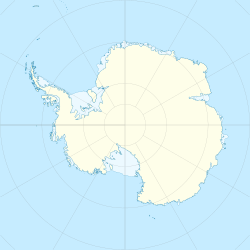Pourquoi Pas Island facts for kids

View of Pourquoi Pas Island from Horseshoe Island
|
|
|
Location in Antarctica
|
|
| Geography | |
|---|---|
| Location | Antarctica |
| Coordinates | 67°41′S 67°28′W / 67.683°S 67.467°W |
| Length | 27 km (16.8 mi) |
| Width | 13 km (8.1 mi) |
| Administration | |
| Administered under the Antarctic Treaty System | |
| Demographics | |
| Population | Uninhabited |
Pourquoi Pas Island is a large, mountainous island located in Antarctica. It is about 27 kilometers (17 miles) long and between 5 and 11 kilometers (3 to 7 miles) wide. This island sits off the west coast of a part of Antarctica called Graham Land, specifically between two fjords named Bigourdan Fjord and Bourgeois Fjord.
Contents
Discovering Pourquoi Pas Island
Pourquoi Pas Island was first seen and recorded by a French expedition. This group was exploring Antarctica between 1908 and 1910. Their leader was a famous French explorer named Jean-Baptiste Charcot.
Charcot's Expedition
Jean-Baptiste Charcot led the French Antarctic Expedition during these years. His goal was to explore and map parts of the Antarctic Peninsula. His ship, the Pourquoi-Pas ?, was specially built for polar exploration. It was a strong ship designed to handle icy waters.
Charting the Island
Later, the island was mapped more accurately by another group. This was the British Graham Land Expedition (BGLE). They explored the area from 1934 to 1937. The leader of this British expedition was John Rymill. His team created better maps of the island.
How Pourquoi Pas Island Got Its Name
The island was named by John Rymill's British expedition. They decided to name it after Jean-Baptiste Charcot's ship, the Pourquoi-Pas ?. The name "Pourquoi-Pas ?" means "Why Not?" in French. It was a way to honor Charcot and his important work in exploring Antarctica.
The Ship: Pourquoi-Pas ?
The Pourquoi-Pas ? was a very important ship in polar history. It was used for several scientific expeditions. Charcot used it for his second Antarctic journey, during which he discovered this island. Naming the island after the ship was a tribute to its role in exploration.
See also
 In Spanish: Isla Pourquoi Pas para niños
In Spanish: Isla Pourquoi Pas para niños


